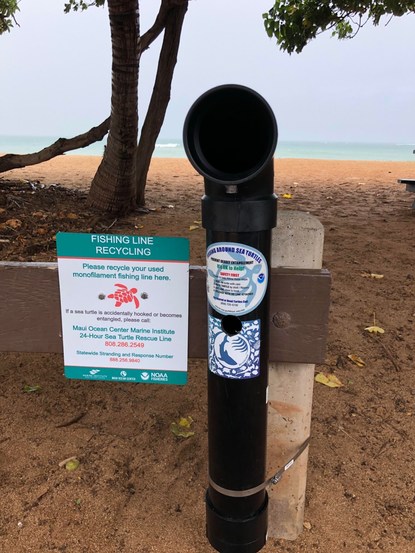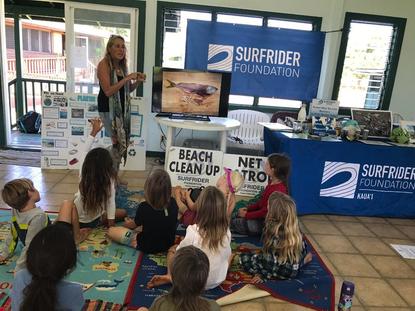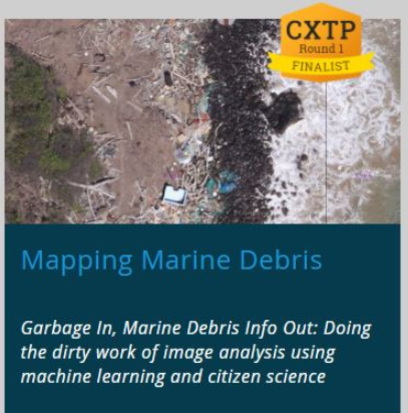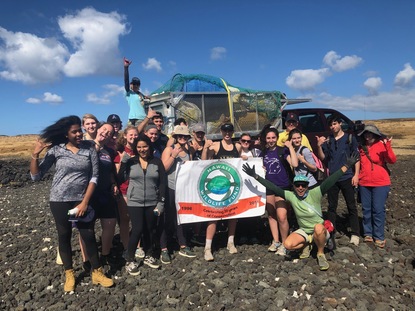| Header Photo: Derelict fishing nets recovered from the Papahānaumokuākea Marine National Monument.
Credit: NOAA
 Image: 2018 Hawai'i Marine Debris Action Plan.
The 2018 Hawai‘i Marine Debris Action Plan (HI-MDAP) is now available to view and download on the NOAA Marine Debris Website. This serves as the final update to the ten-year action plan; the plan concludes in 2020. Partners convened during a two-day workshop to discuss the current state of the HI-MDAP and propose updates and changes. The HI-MDAP contains shared goals, strategies to achieve those goals, and corresponding actions.
 Image: A fishing line recycling bin on the North Shore of Maui. Credit: Aleysa Martin, MOC Marine Institute
Submitted by: Tommy Cutt
Recreational fishing gear, including entanglement in monofilament fishing line, is identified as the leading cause of sea turtle stranding in the main Hawaiian Islands. To prevent pollution and decrease harmful interactions between sea turtles and fishing line, MOCMI launched the Fishing Line Recycling Program in June 2018. The program has been effective in engaging fishers in conservation activities, and since June, more than 18,000 meters of line has been collected in bins on Maui.
Learn more here.
 Image: Barbara teaches first grade students about marine debris. Credit: Surfrider Kaua'i
Submitted by: Barbara Wiedner
First-grade students at Home School Now in Hanalei had the opportunity to learn about marine debris and participate in a beach clean up. In January, Barbara Wiedner of Surfrider Kaua‘i met with the students during their weekly Nature Day. “It was great to teach the kids about the problem of plastic pollution and nets, and then go clean those items off of the beach,” she shared. Her discussion with students included gyres, plastics and nets, and focused on things we can all do to help prevent and reduce marine debris.
For more information on Surfrider Kaua‘i activities and volunteer opportunities, please contact Barbara Wiedner.
 Image: Mapping Marine Debris project page on Conservation X Labs Digital Markerspace.
Submitted by: Miguel Castrence
Volunteers are needed to review aerial imagery to help develop a machine learning framework for mapping marine debris. Check out the project description on the Conservation X Labs Digital Makerspace and contact Miguel Castrence (miguel@remaphawaii.com) to learn how you can help.
 Image: Hawai'i Wildlife Fund volunteers after a cleanup. Credit: HWF
Submitted by: Mattie Larson
Hawaiʻi Wildlife Fund (HWF) had a benchmark year in 2018 for our Marine Debris Removal projects. With the help of hundreds of volunteers, over 53,000 lbs. of marine debris was removed during 60 cleanup events on Maui and Hawai'i Island. In October, a milestone was hit on the Big Island: 250 tons of marine debris removed since 2003!
Other 2018 highlights include the addition of a 1-ton Dodge Ram pickup to the Hawaiʻi Island fleet that is equipped to grab and haul large net bundles from the rocky shorelines, and an increase in local school participation. We look forward to continuing our efforts to combat plastic pollution both on the beach and in the classroom throughout 2019.
|